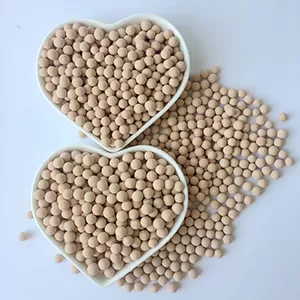Lithium molecular sieve, modified with lithium ions, features a crystalline structure optimized for selective adsorption of small polar molecules, particularly carbon dioxide. Its narrow pore size (3–5 angstroms) and high affinity for polar compounds make it ideal for gas purification, such as removing CO₂ from biogas or flue gases. The packing of this sieve in specialized columns ensures targeted separation, with minimal adsorption of non-polar gases.

High-efficiency molecular sieve, by contrast, is designed for broad-spectrum adsorption, with a larger and more varied pore structure (4–10 angstroms). It excels at removing moisture, hydrocarbons, and multiple impurities simultaneously, making it suitable for diverse applications like compressed air drying and solvent recovery. Its high surface area enhances adsorption capacity, allowing it to handle higher pollutant concentrations than lithium sieve.
Performance in regeneration also differs: lithium molecular sieve requires precise temperature control (200–250°C) to preserve its lithium-ion structure, while high-efficiency sieve tolerates broader regeneration ranges (200–350°C). Additionally, the packing density of high-efficiency sieve is often lower to facilitate faster gas flow, whereas lithium sieve packing is denser to maximize contact with target gases. These distinctions make each sieve uniquely suited to its industrial niche.

